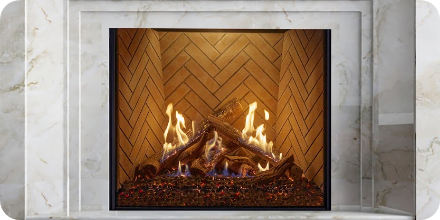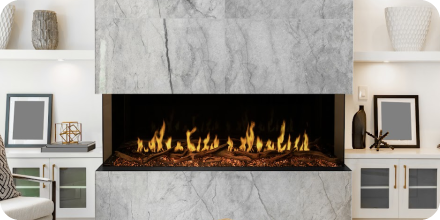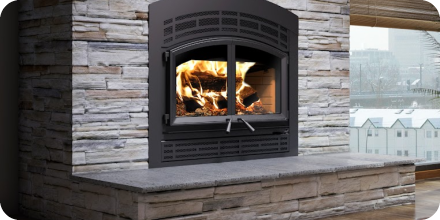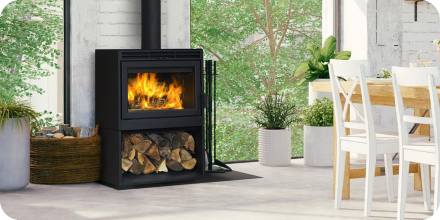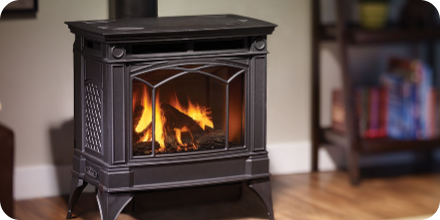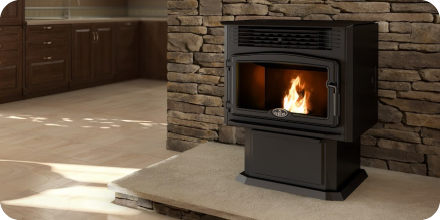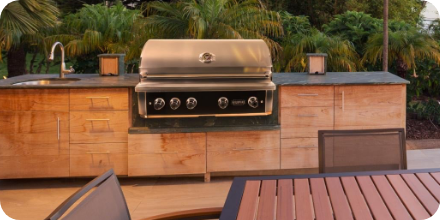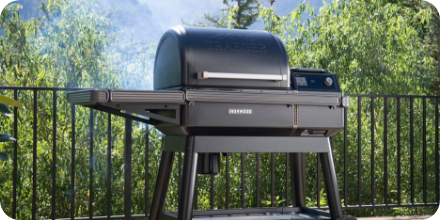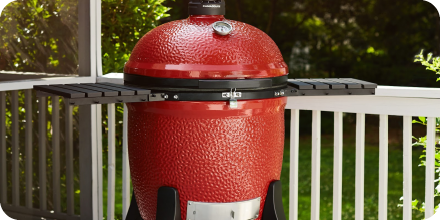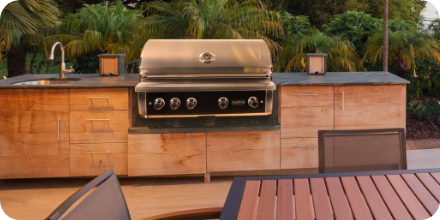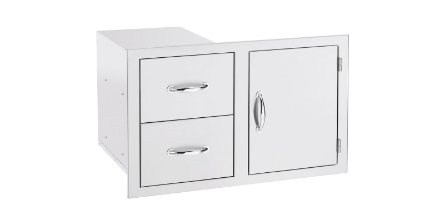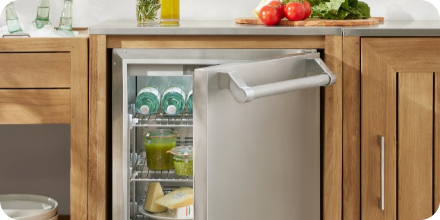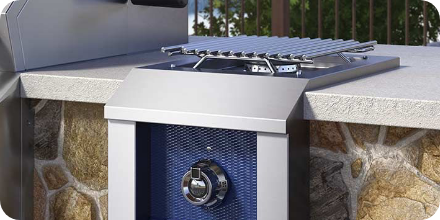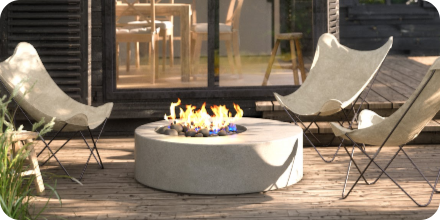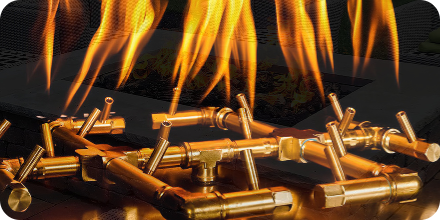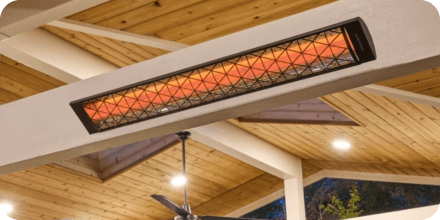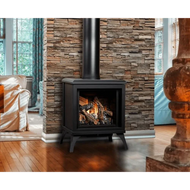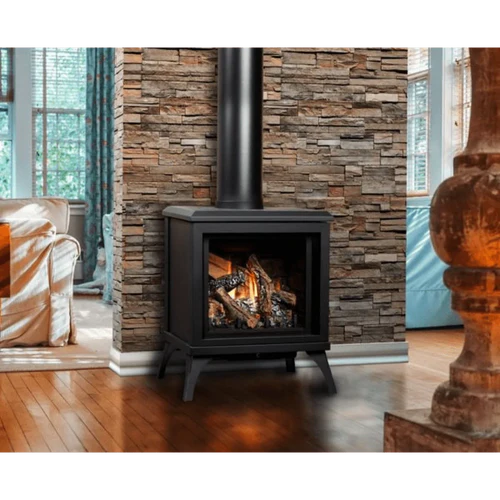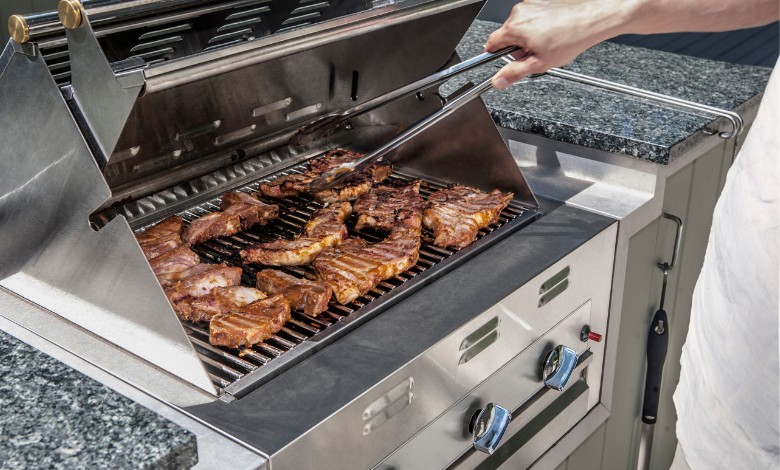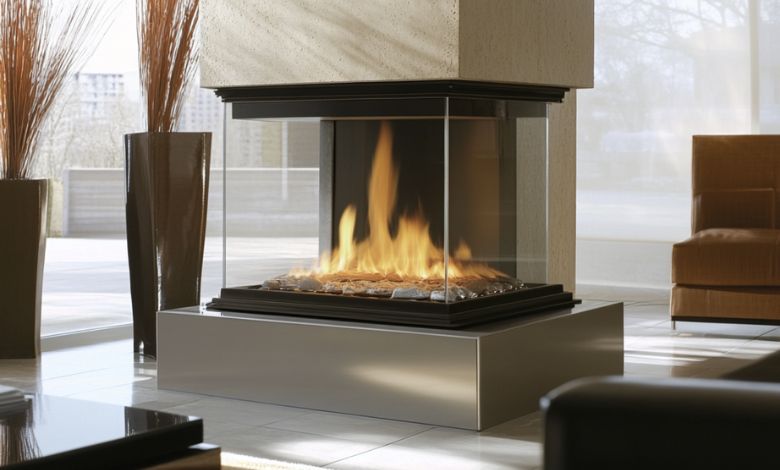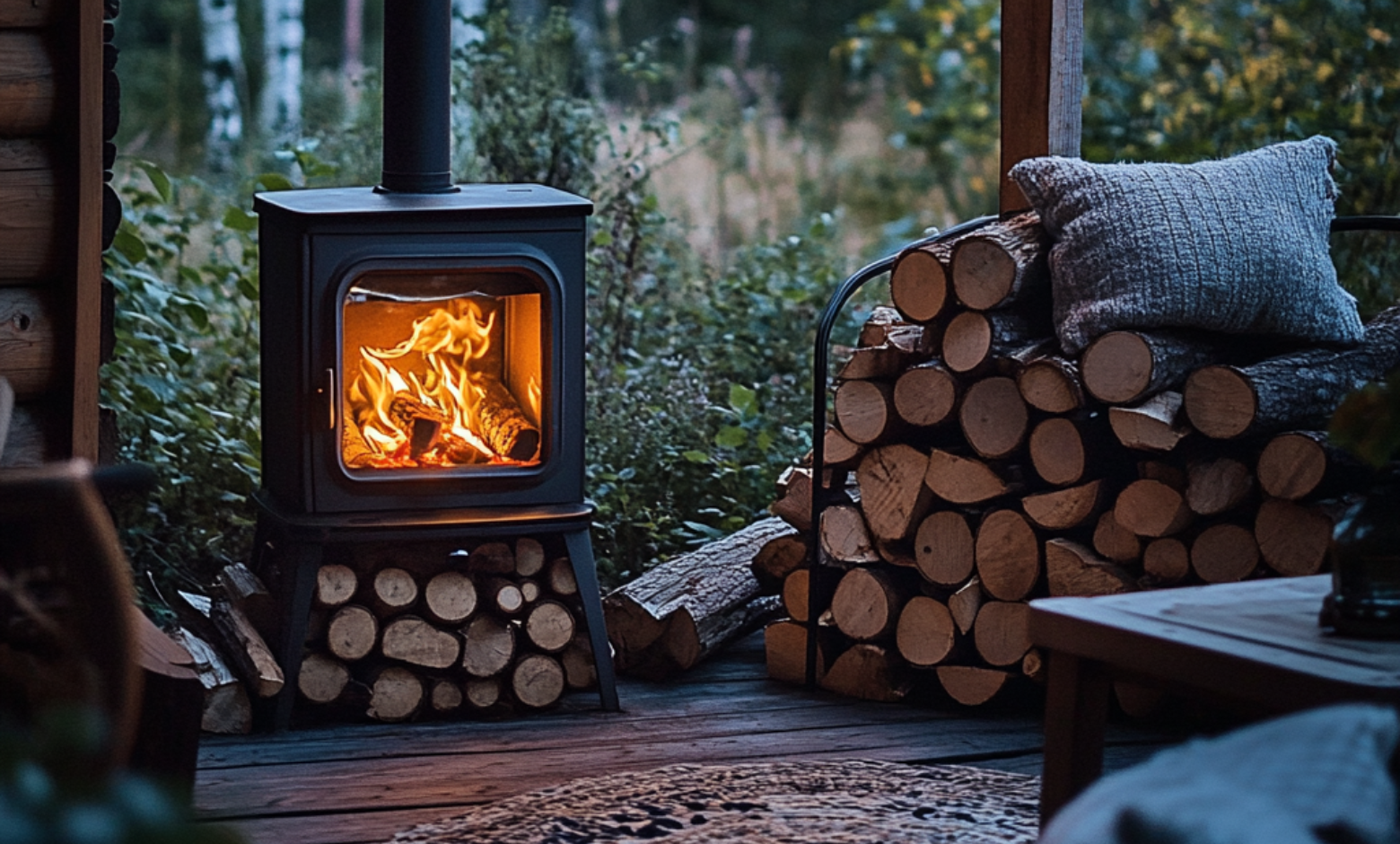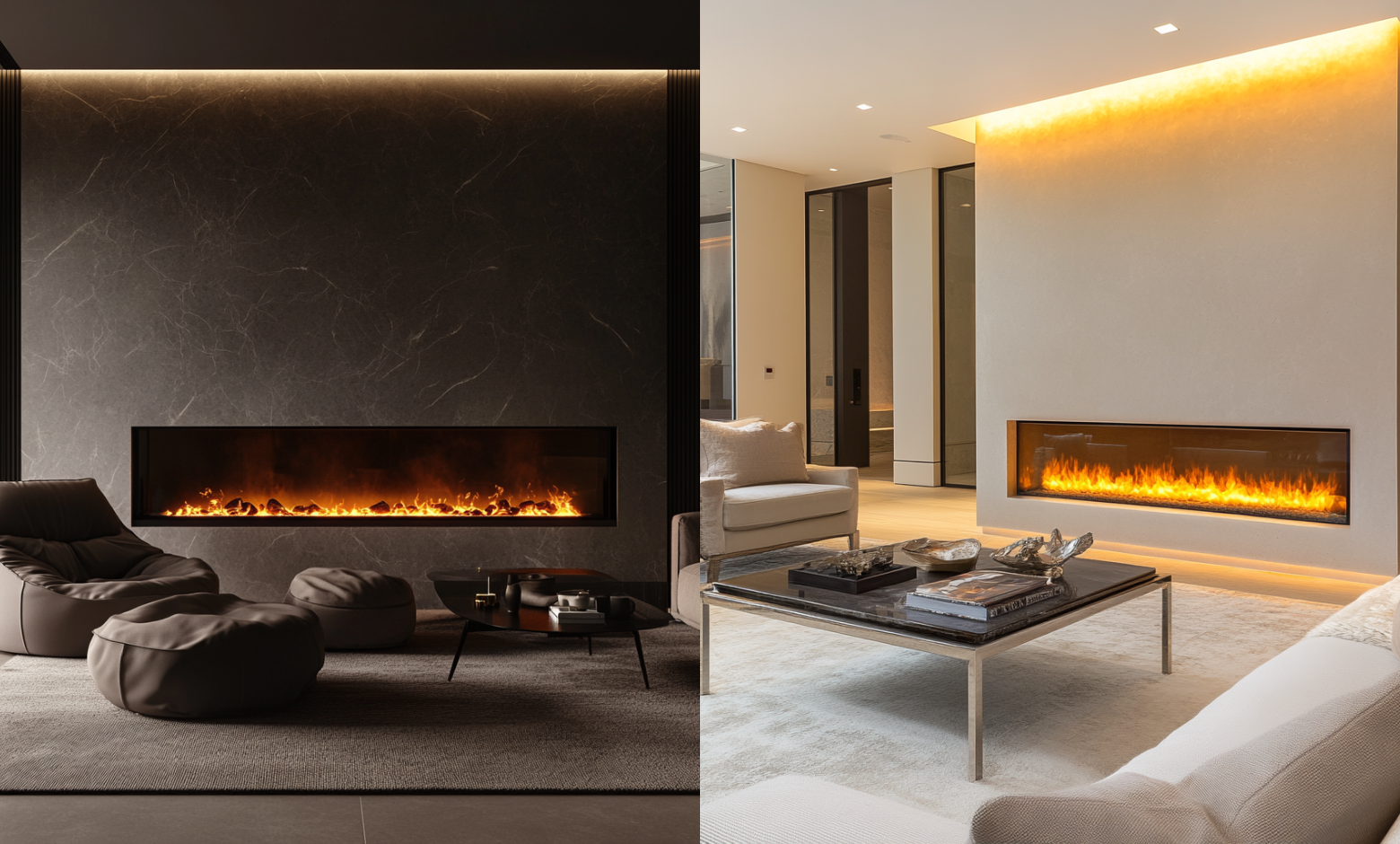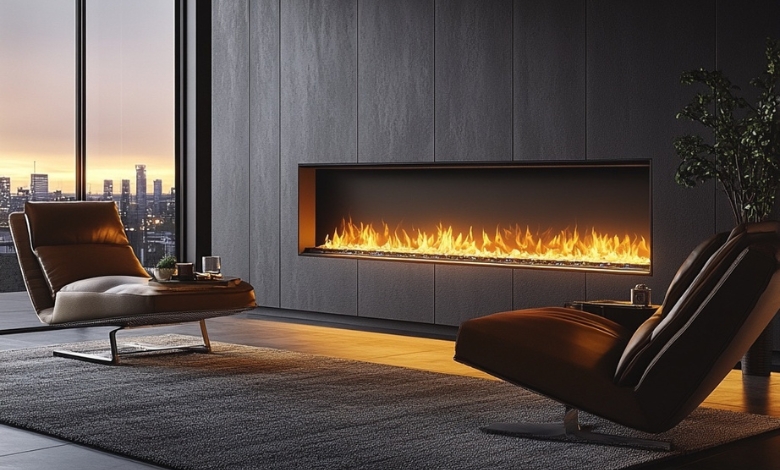Does a Gas Fireplace Need a Chimney
Posted by Anna William on Nov 27th 2025
If you’re thinking about getting a gas fireplace for your home, you may be wondering about the installation process. A common question that often arises is, "Does a gas fireplace need a chimney?" Before making your purchase, it's important to understand the different types of gas fireplaces and their unique venting requirements.
In this comprehensive guide, we'll walk you through everything you need to understand about gas fireplace chimneys, venting options, installation processes, and ongoing maintenance. So if you’re ready to learn more about how to safely and efficiently use a gas fireplace in your home, keep reading!
What is a Gas Fireplace?
A gas fireplace is a popular alternative to a traditional wood-burning fireplace. Gas fireplaces use natural gas or propane as fuel and come in a variety of styles, from traditional to contemporary. They can be placed in any room of your home, offering a perfect way to enhance both the ambiance and warmth of your space.
Gas fireplaces offer the flexibility to be installed in virtually any room, providing a perfect combination of warmth and atmosphere. They are recognized for being more efficient than traditional wood-burning fireplaces, as they generate less pollution and eliminate the need for messy wood and ash cleanup. With the simple convenience of turning them on and off with the flick of a switch, gas fireplaces are a hassle-free option for homeowners. Before installing a gas fireplace, it's important to understand how it works and the type of venting system it needs. A common question many have is: Does a gas fireplace require a chimney? Let’s explore this in more detail.
Do Gas Fireplaces Need a Chimney?
A gas fireplace can function without a chimney, but it will require proper venting to expel the combustion byproducts. The most important thing to consider when deciding if a gas fireplace needs a chimney is what type of venting system you will use.
Vented gas fireplaces must have a vent to the outside of the home, while vent-free gas fireplaces can be installed without any external venting. If you’re not sure which type of gas fireplace is right for you, consult with a professional installer who can help you make the best decision for your needs and budget.
No, gas fireplaces do not always require a chimney. There are two main types of gas fireplaces: vented and vent-free. Vented gas fireplaces must have a chimney or some other type of venting system to safely expel combustion byproducts from the home.
On the other hand, vent-free gas fireplaces don't need a chimney, as they are designed to burn gas efficiently, producing very few byproducts. However, it's essential to understand that vent-free models may be prohibited in certain states and local areas due to safety concerns.
Types of Gas Fireplaces
There are a variety of gas fireplaces available today, each offering unique features and benefits. Below are some of the most popular types:
Built-In Gas Fireplaces
These are the most common types of gas fireplaces and can be either vented or vent-free. Built-in gas fireplaces are typically installed into an existing wall and come complete with all necessary components, including a gas line and ignition system.
Portable Gas Fireplaces
Portable gas fireplaces are freestanding units that can be moved from room to room as desired. They are available in both vented and vent-free models, but because they are not permanently installed, they typically require more frequent maintenance and cleaning than built-in units.
Outdoor Gas Fireplaces
Outdoor gas fireplaces are designed for use in patios, decks, and other outdoor areas. Gas fireplaces are available in two primary types: vented and vent-free, both of which generally require a gas line connection.
If you're unsure which option is best for your home and budget, consulting with a professional installer is recommended. They can help you select the ideal choice based on your unique needs.
Vented Gas Fireplaces
A gas fireplace will not function without a chimney, but it may not need one depending on the type of venting system used. Gas fireplaces can be either vented or vent-free.
A vented gas fireplace requires a chimney or some other type of venting system to expel combustion byproducts from the home, while a vent-free gas fireplace does not produce any dangerous combustion byproducts and therefore does not require a chimney.
If you’re not sure whether you need a chimney for your gas fireplace, consult with a professional installer who can help you determine the best option based on your specific needs and setup.
Vent-Free Gas Fireplaces
Actually, the correct answer is that vent-free gas fireplaces do not require a chimney. These fireplaces are designed to burn gas efficiently and produce minimal combustion byproducts, so they don’t need a traditional venting system. They are a popular choice for areas where venting might be difficult or expensive.
However, while they don't need a chimney, they do produce moisture and small amounts of combustion gases inside the home. This means they should be used with care, especially in spaces with poor ventilation or in homes where people have respiratory issues. It’s also important to ensure that the area is well-ventilated and that the unit is properly maintained to avoid any safety concerns, such as carbon monoxide buildup.
If you’re considering a vent-free gas fireplace, always check local building codes and manufacturer guidelines for safety requirements.
Installation and Code Requirements
Before installing a gas fireplace, it's a good idea to reach out to your local building department. They can tell you about the required venting and any other code requirements specific to your area, helping you make sure everything is safe and up to code.
Gas fireplaces need to be properly vented to the outside of the home, either through a chimney or some other type of venting system. The best way to ensure that your gas fireplace is up to code is to hire a professional installer who will know how to properly vent the unit and meet all other local code requirements.
Building Code Mandates
As mentioned above, gas fireplaces must be properly vented to the outside of the home. The type of venting required will vary depending on the make and model of your gas fireplace, so be sure to check with the manufacturer for specific installation instructions.
Professional Installation
If you’re not comfortable installing the gas fireplace yourself, be sure to hire a professional who is experienced in working with these types of units.
Professional installation is always recommended for gas fireplaces. A certified installer will ensure that your gas fireplace is up to code and will also be familiar with all of the different types of venting that are available, so they can recommend the best option for your needs and setup.
Advantages of Vented vs Vent-Free
Both vented and vent-free gas fireplaces are great choices, each bringing its own unique benefits. The best fit for you will depend on your particular needs and personal style. If you’re unsure which one suits your home better, don't hesitate to reach out to a professional installer. They can guide you toward making the best decision for your home and comfort.
Maintenance for Gas Fireplace Venting
It’s important to keep your gas fireplace well-maintained to ensure that it’s always operating safely and efficiently. Here are some tips for maintaining your gas fireplace venting system:
Annual Inspections
Be sure to have your gas fireplace inspected by a professional at least once a year. Annual inspections will help to ensure that the chimney for the gas fireplace is clear of debris and that the venting system is working properly.
Signs to Watch For
If your gas fireplace isn't performing like it used to or you're encountering any issues, it's important to reach out to a professional immediately for assistance. It’s always better to be safe than sorry when it comes to gas fireplaces, so if you have any concerns, be sure to have them checked out by a professional.
How to Vent a Gas Fireplace
When it comes to venting your gas fireplace, there are multiple options available, each tailored to suit various needs and installation preferences. The most important thing is to make sure that whatever type of venting you choose is up to code and meets all of your local building requirements.
If you’re not sure which type of venting is right for you, be sure to consult with a professional installer who can help you make the best decision for your home. There are several different types of venting for gas fireplaces, as we’ve already mentioned. Here’s a closer look at some of the most popular options:
Chimney Venting
The most common type of venting for gas fireplaces is through a chimney. If you have a traditional masonry chimney, you can use that to vent your gas fireplace. This is a great option because it’s already up to code and meets all local building requirements.
Plus, it’s usually the most efficient way to vent a gas fireplace. Metal Double-Walled Vent Pipes
If you don’t have a chimney or if you prefer not to use your existing chimney, you can opt for metal double-walled vent pipes. These pipes are less expensive and easier to install than traditional masonry chimneys, but they may not be as effective at venting combustion byproducts from the home.
Vent-Free Gas Fireplaces
Vent-free gas fireplaces are another popular option that’s becoming more and more common in recent years. This type of fireplace doesn’t require any venting because it recirculates the air in your home and doesn’t produce any dangerous combustion byproducts.
However, because the combustion process isn’t vented to the outside, there is a potential for carbon monoxide build-up, so it’s essential to have a working chimney for your vent-free gas fireplace. Power Vented Fireplaces
Power-vented fireplaces are another great option that’s becoming more popular these days. This type of fireplace uses an electric fan or blower to exhaust combustion gases through the venting system.
Power-vented fireplaces are ideal for homes where venting through a traditional chimney or wall vent is not possible or practical. So, if you’re looking for an efficient and effective way to vent your gas fireplace, be sure to consider a power-vented unit.
Maintenance for Gas Fireplace Chimneys
In addition to keeping your gas fireplace venting system clean and clear, it’s also important to properly maintain the chimney for your gas fireplace as well. Here are some tips for keeping your chimney in good condition:
Cleaning the Chimney
Be sure to have your chimney cleaned by a professional at least once a year. This will help to remove any built-up soot and creosote that can accumulate over time and cause blockages in the chimney.
Inspecting the Chimney
In addition to having your chimney cleaned once a year, be sure to have it inspected by a professional as well. This will help identify any potential problems before they become serious issues that could put you or your family at risk.
Repairing the Chimney
If any damage is found during an inspection of your chimney, be sure to have it repaired as soon as possible. This will safeguard your chimney from further wear and tear, helping it stay in excellent condition for years to come.
Safety Precautions
Gas fireplaces are a fantastic way to bring warmth and atmosphere to your home, but it’s essential to observe proper safety measures when operating one. Here are a few important tips to ensure safe use of your gas fireplace:
Follow the Manufacturer’s Instructions
Always follow the manufacturer’s instructions when operating your gas fireplace. Doing so will ensure that the unit complies with all necessary codes and meets the building regulations in your area.
Do Not Use Charcoal in the Fireplace
Never use charcoal in your gas fireplace. Charcoal has the potential to create hazardous levels of carbon monoxide indoors, posing a serious risk to health and safety.
Smoke Detectors
Make sure your home has working smoke detectors placed in the right spots. It's a good idea to have a smoke detector on every level, including the basement, to keep everyone safe and sound.
Carbon Monoxide Detectors
In addition to having working smoke detectors, it’s also a good idea to install carbon monoxide detectors in your home. Carbon monoxide is a silent and invisible gas that poses serious health risks, as it has no color or smell. In high concentrations, it can be life-threatening if breathed in.
Carbon monoxide detectors are available at most hardware stores and are an easy and affordable way to keep your family safe from this dangerous gas.
Final Thoughts
Gas fireplaces are a great way to add ambiance and warmth to your home, but it’s important to take certain safety precautions when using one. The most important thing is to be sure that whatever type of venting you choose is up to code and meets all of your local building requirements.
If you’re not sure which type of venting is right for you, be sure to consult with a professional installer who can help you make the best decision for your home. Gas fireplaces offer a fantastic way to enhance the warmth and atmosphere of your home, but safety should always be a top priority. Make sure to adhere closely to the manufacturer’s guidelines and avoid using charcoal or any other materials not designed for gas fireplaces. Taking these precautions will help guarantee a safe and enjoyable experience.
Install working smoke detectors in your home and place them in the correct locations, and consider installing carbon monoxide detectors as well. By following these straightforward guidelines, you can safely enjoy your gas fireplace for many years. For additional details on gas fireplace installation and upkeep, visit Embers Living. We are your go-to destination for expert advice and top-quality home heating and fireplace solutions.

